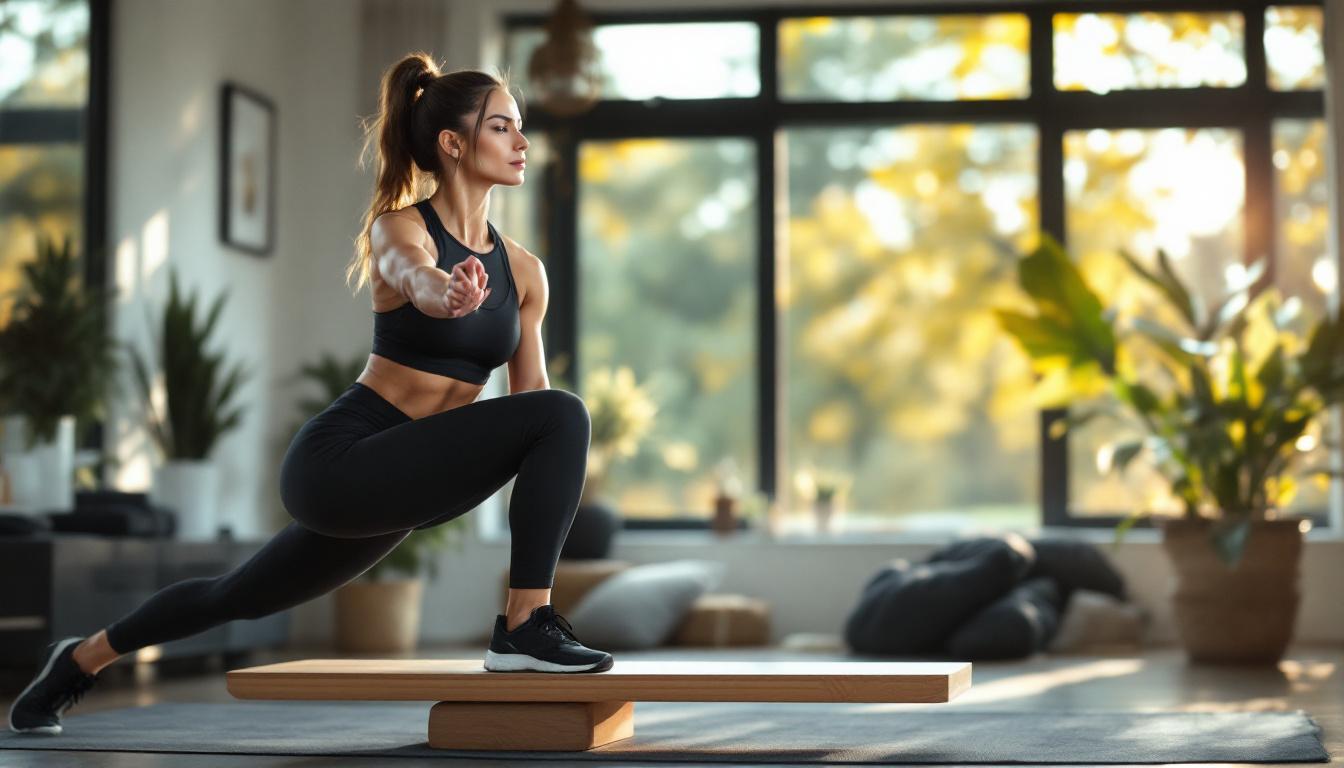The first time I stepped onto a balance board, I nearly face-planted on my living room floor. Fast forward 30 days of consistent practice, and the transformation in my core stability has been nothing short of remarkable. This wobbly wooden platform has revolutionized my fitness routine in ways I never anticipated.
What happens when you train on a balance board daily?
According to fitness expert Dr. James Wilson, “Balance board training performed daily can significantly improve core stability by forcing continuous engagement of core muscles to maintain balance on an unstable surface.” This isn’t just theory—I experienced it firsthand.
The science is clear: when you stand on an unstable surface, your body activates the entire core musculature, including deeper stabilizers that rarely get challenged during conventional workouts. This engagement pattern strengthens your core from the inside out.
The invisible workout happening in your body
What makes balance board training so effective is the constant micro-adjustments your body makes. Think of your core muscles as a team of vigilant guards—on stable ground, only a few are on duty. On a balance board, the entire security force springs into action.
“The proprioceptive system receives a tremendous boost through balance board training,” explains kinesiologist Dr. Sarah Thompson. “This enhances the neural pathways between your brain and muscles, creating faster, more efficient responses to instability.”
My 30-day transformation journey
Here’s how my experience unfolded:
- Week 1: Struggled to maintain balance for more than 30 seconds
- Week 2: Could stand comfortably for 2 minutes and attempted basic movements
- Week 3: Added squats and balance challenges with eyes closed
- Week 4: Performed single-leg stances and dynamic movements
By day 30, my core felt like a solid pillar of support during all activities. This transformation reminded me of my experience with daily planking, which similarly revolutionized my functional strength.
Beyond core strength: Unexpected benefits
The improvements extended beyond just my midsection. My chronic lower back discomfort virtually disappeared—similar to what many experience with suspension training. My posture improved dramatically, and I gained newfound awareness of my body’s position in space.
Perhaps most surprising was the boost to my balance and stability. Activities that once challenged me, like single-leg exercises, became noticeably easier.
Simple yet effective balance board routine
My daily practice included these progressive challenges:
- Basic standing balance (2-3 minutes)
- Gentle weight shifts (front/back, side-to-side)
- Modified squats while maintaining balance
- Eyes-closed balance work (advanced)
Expert tips for balance board beginners
Sports physiotherapist Mark Davis recommends: “Start with your balance board on carpet or another soft surface. Use a wall or sturdy furniture for support initially, and progress gradually as your confidence builds.”
This approach mirrors the progressive overload principle seen in other effective core workouts like battle ropes training.
Who can benefit from balance board training?
Almost everyone! From athletes to seniors concerned about fall prevention, balance board training offers scalable challenges that adapt to any fitness level.
The beauty of this training is its simplicity. It transforms idle moments—like brushing your teeth or watching TV—into opportunities for functional fitness improvement.
Is this the missing piece in your fitness routine?
Like an orchestra conductor guiding musicians, your core coordinates all body movements. Strengthening this central command center creates ripple effects throughout your entire physical performance. My month of wobbling has transformed my stability, posture, and confidence in ways traditional exercises never could. Could a simple balance board be the game-changer your fitness routine needs too?
